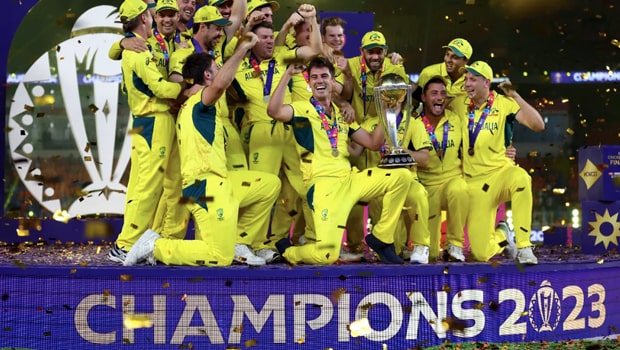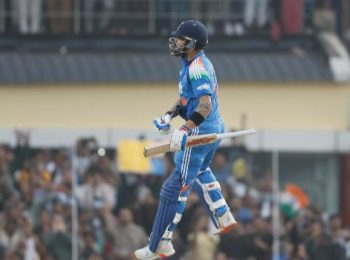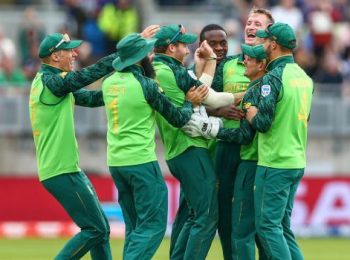After 46 days and 48 matches, the 2023 ODI World Cup ended with Australia decimating India in Ahmedabad to lift their sixth trophy. A team that began the tournament with two defeats to sit on October 15 at last on the points table, won nine matches in a row to get their hands on the coveted prize to add to the T20 World Cup won in 2021 and the World Test Championship secured this past summer.
Sunday’s defeat brought to a screeching haul the Indian cricket team’s 10-match unbeaten streak while reminding the cricket world what Australian teams are made of. Thus, a tournament that began at the Narendra Modi Stadium on October 8 in front of a smattering of fans – why did England and New Zealand open the World Cup and not India? – concluded at the same venue as dejected Indian cricket fans made a beeline for the exit gates.
Rohit Sharma’s team was widely tipped to win the World Cup, but in the end, it succumbed to familiar failings in the face of the Australian juggernaut. To enter the final 10-0 was indeed remarkable, more so given that India had to gamble in seven matches without Hardik Pandya. Rohit Sharma’s aggressive starts, Virat Kohli’s runs, Mohammed Shami’s amazing run when coming off the bench and Shreyas Iyer’s solid returns from No 4 were the features of India’s run to the final.
And yet, no trophy for 10 years and counting. As a host of Indian stars shape to exit the ODI format in the not too distant future, fans of the team must be wondering despairingly when the next ICC trophy will come their way.
New Zealand, runners-up in 2015 and 2019, had the benefit of an easy first four matches – England, Netherlands, Bangladesh and Afghanistan – but then lost four in a row to drop plenty of momentum. Not helped by a spate of injuries, the Black Caps finally got to choose from their initial 15 for their last group stage match against Sri Lanka, which they won to make the final four, but were outplayed by India in the first semi-final.
South Africa fielded two teams in this World Cup: one that often stormed to massive totals when batting first, and the second which just could not chase without creating a mess, highlighted most glaringly when it was bowled out for just 83 by India. That South Africa could afford to carry a non-perform in their captain Temba Bavuma was due to the fact that six of the top seven regularly did the heavy lifting, but their poor batting in the Kolkata semi-final cost them a place in a first World Cup final.
England were the biggest surprise, languishing at the bottom of the table for much of the World Cup and finishing at seventh. Jos Buttler’s team lost six of their nine matches and the memories of 2019 appear very far in the distance.
But the bigger picture, given the doubts over the health of the ODI format is that this World Cup did little, in this writer’s mind, to erase genuine concerns about the 50-over game. Right here in these pages, former West Indies opener Chris Gayle expressed concern over the ODI game while calling on the ICC to keep it relevant.
For starters, a ten-team tournament, which is set to expand to 14 in 2027, was just too erratic and lop-sided in terms of talent. Three teams – India, Australia and South Africa – were consistently competitive and a fourth – New Zealand – was above average. Afghanistan punched above their weight to briefly lift hopes of an unprecedented semi-final berth, but lacked the ruthlessness required across nine matches. The other five teams were just not equipped to win matches at a stretch, which just underlines why there are such genuine concerns over the ODI format’s future.
This World Cup was, statistically, the most one-sided in terms of results. This had a lot to do with how abject Bangladesh, England and Sri Lanka were as well as the pitches rolled out across India. The Dutch pulled one from under South Africa’s feet and beat Bangladesh, but their challenge was never really felt because, unfortunately, Associates end up being stretched in ICC events when the competition and conditions are tougher. Pakistan have not looked the same team since losing to India in the Asia Cup, a defeat which sent Naseem Shah into injury rehabilitation, and it is tough to name a poorer Pakistan team sent to a World Cup.
There were some upsets, chiefly Afghanistan defeating defending champions England and Netherlands beating South Africa, but overall the results were rather one-sided, barring a dozen-odd matches. Afghanistan, who entered the tournament with one prior win in two World Cups, upended predictions by finishing sixth in the standings and this was, truly, a captivating team to follow. Hashmatullah Shahidi’s team beat England, Pakistan, Sri Lanka and Netherlands and really should have added Bangladesh, which ultimately cost them a place in the semi-finals more than the match with Australia, where Glenn Maxwell smacked an unbeaten double-century to lift his team from 91/7 when chasing 292.
Indeed, Australia’s success proves what stability and perseverance can get you. They were deserving winners, coming back from 0-2 to win nine games on the trot. But was the World Cup a success? The answer will be revealed in the next couple years.



























